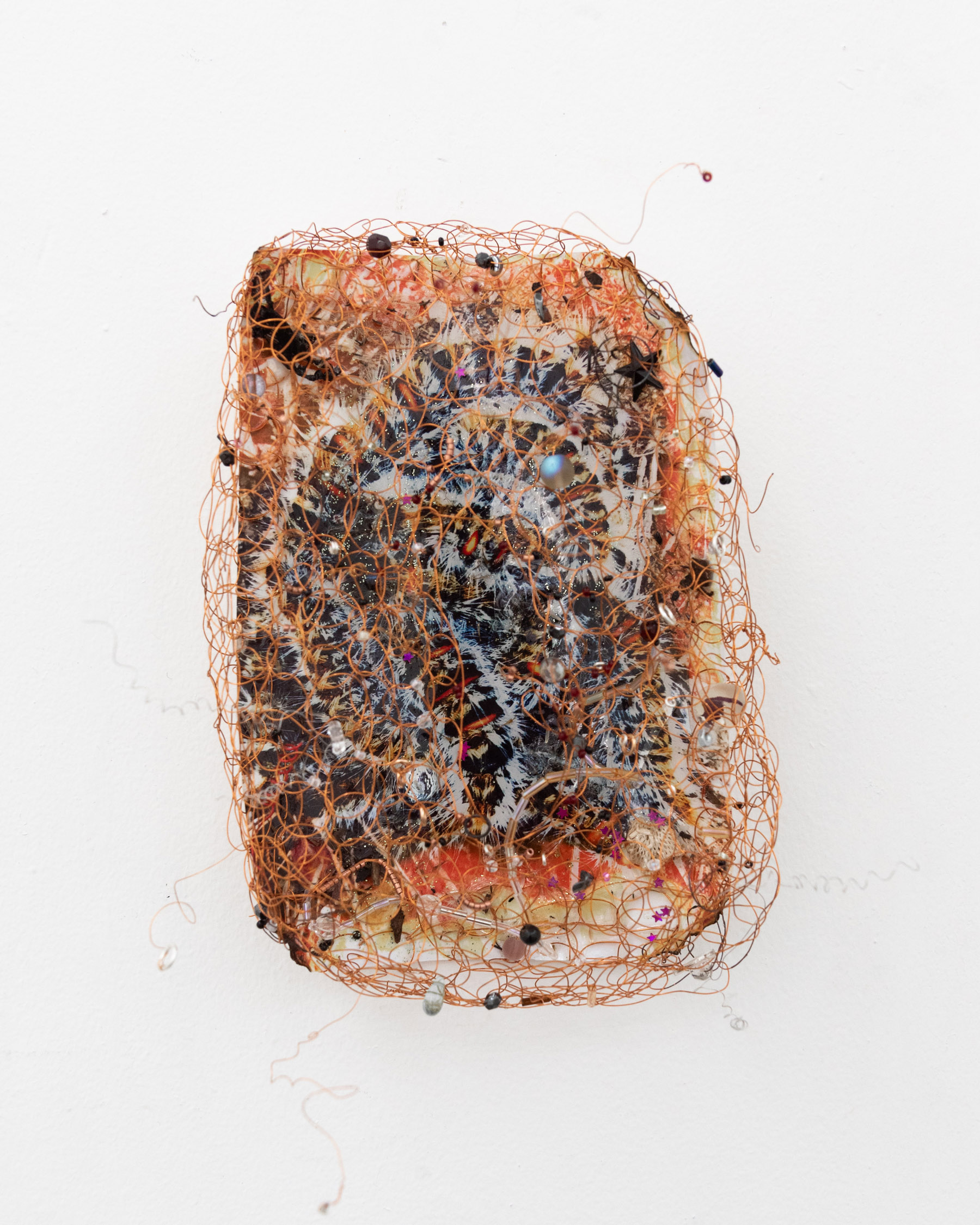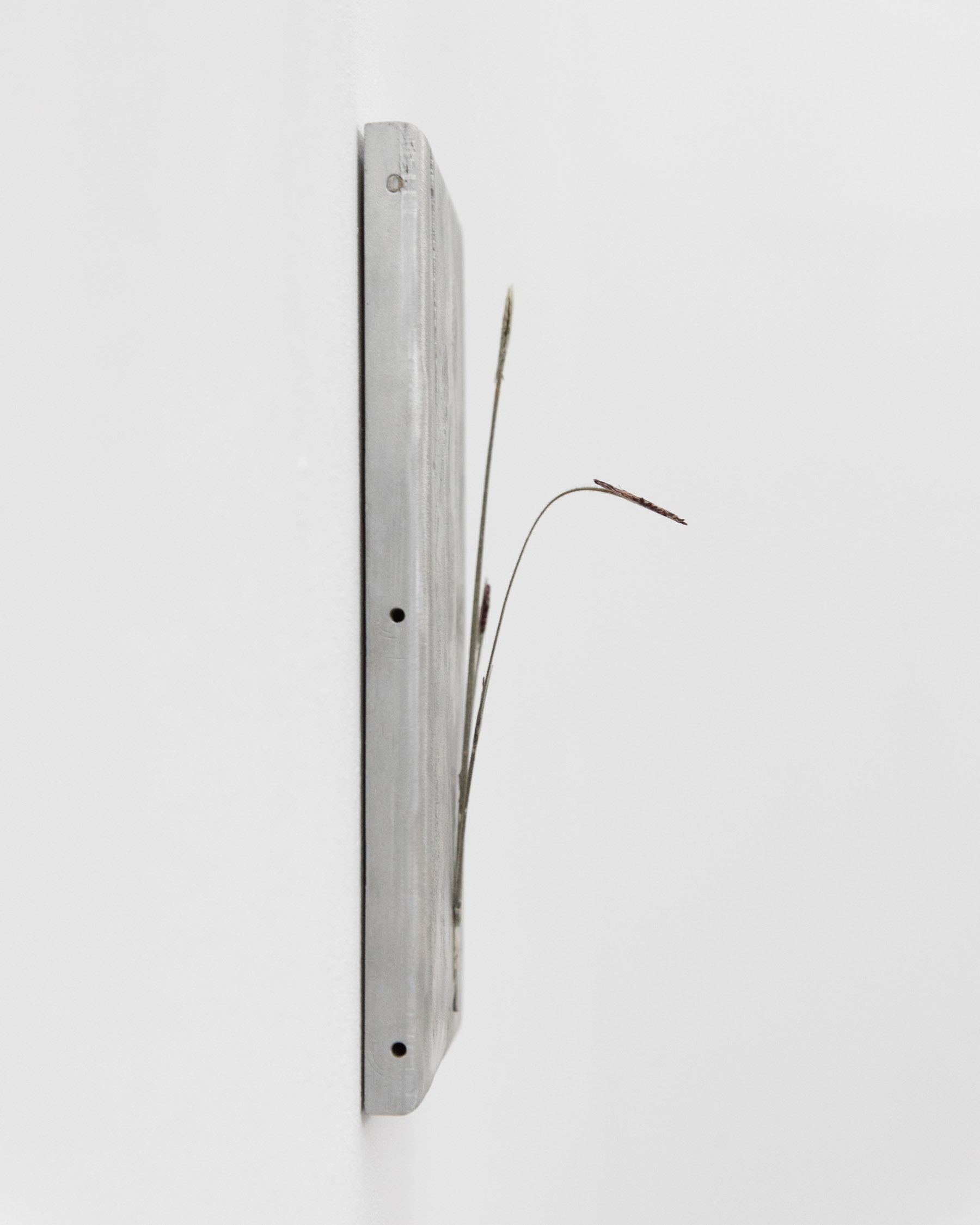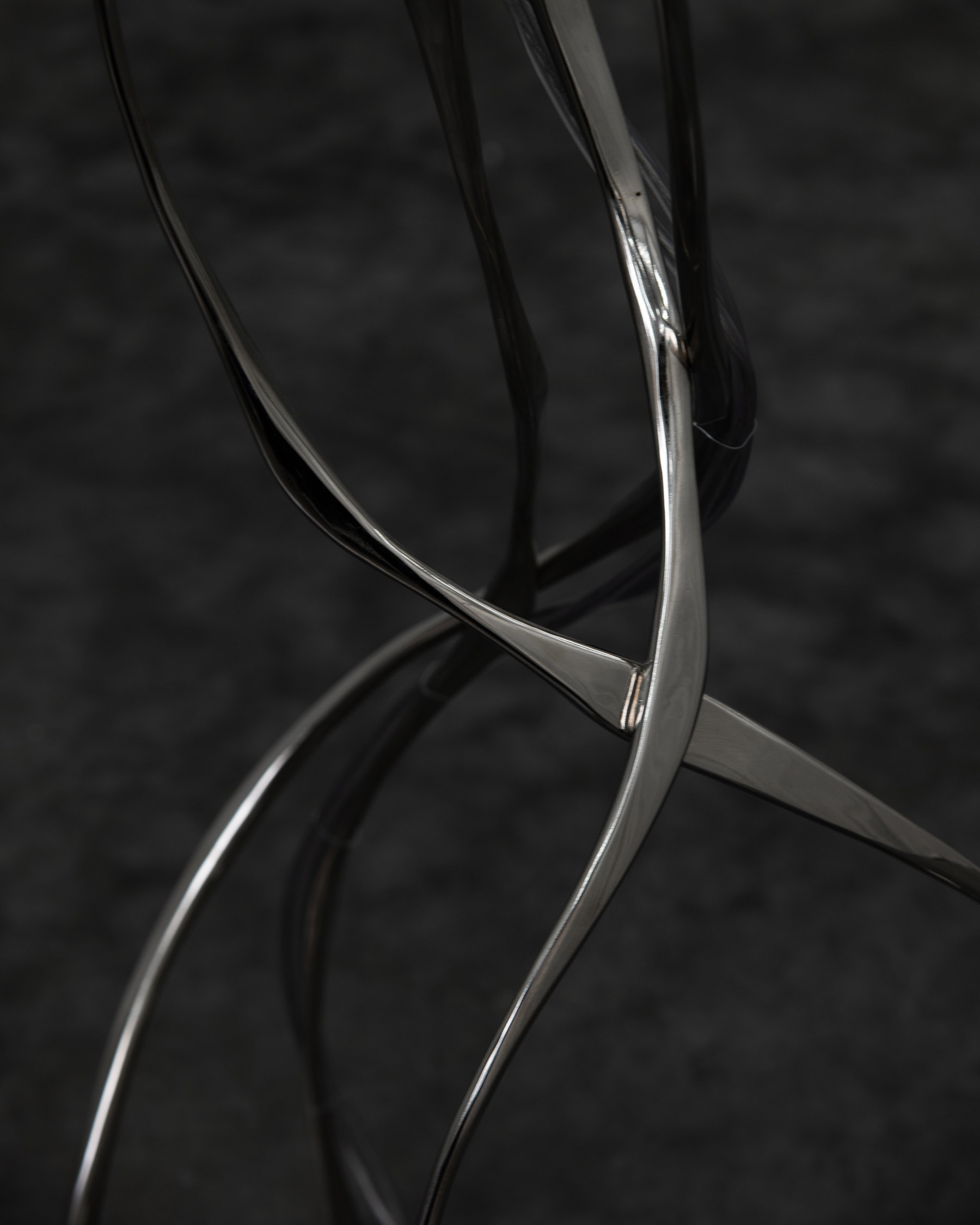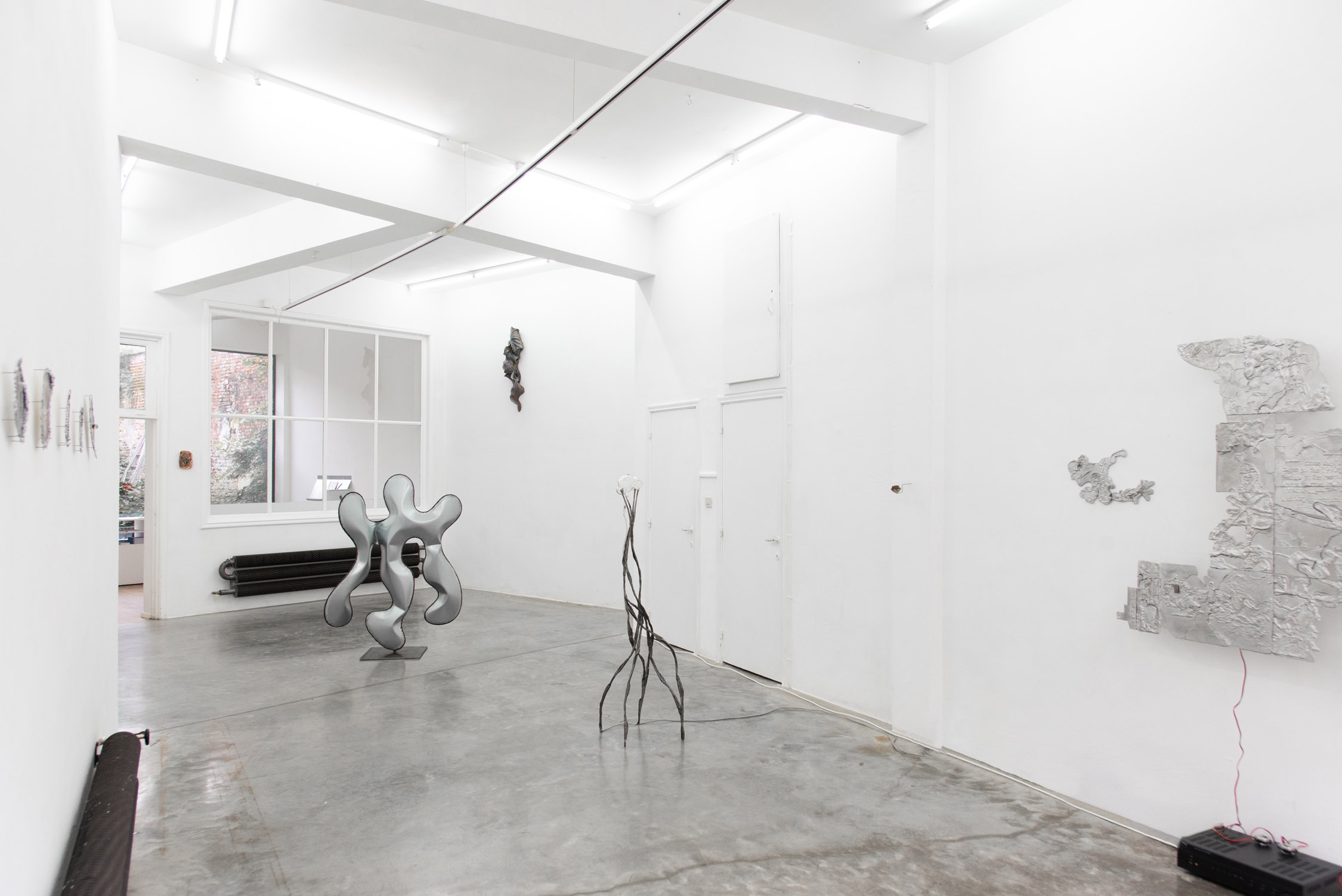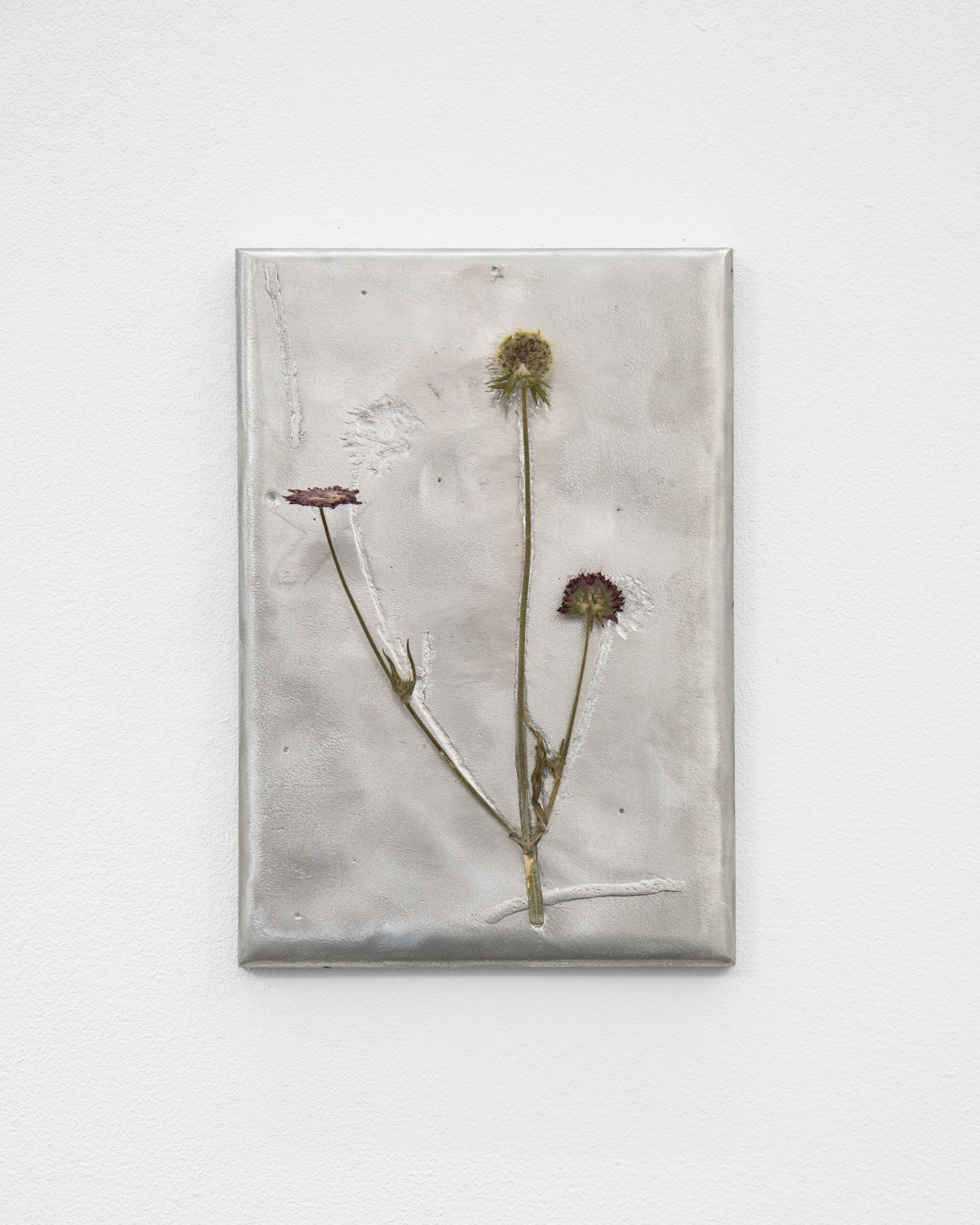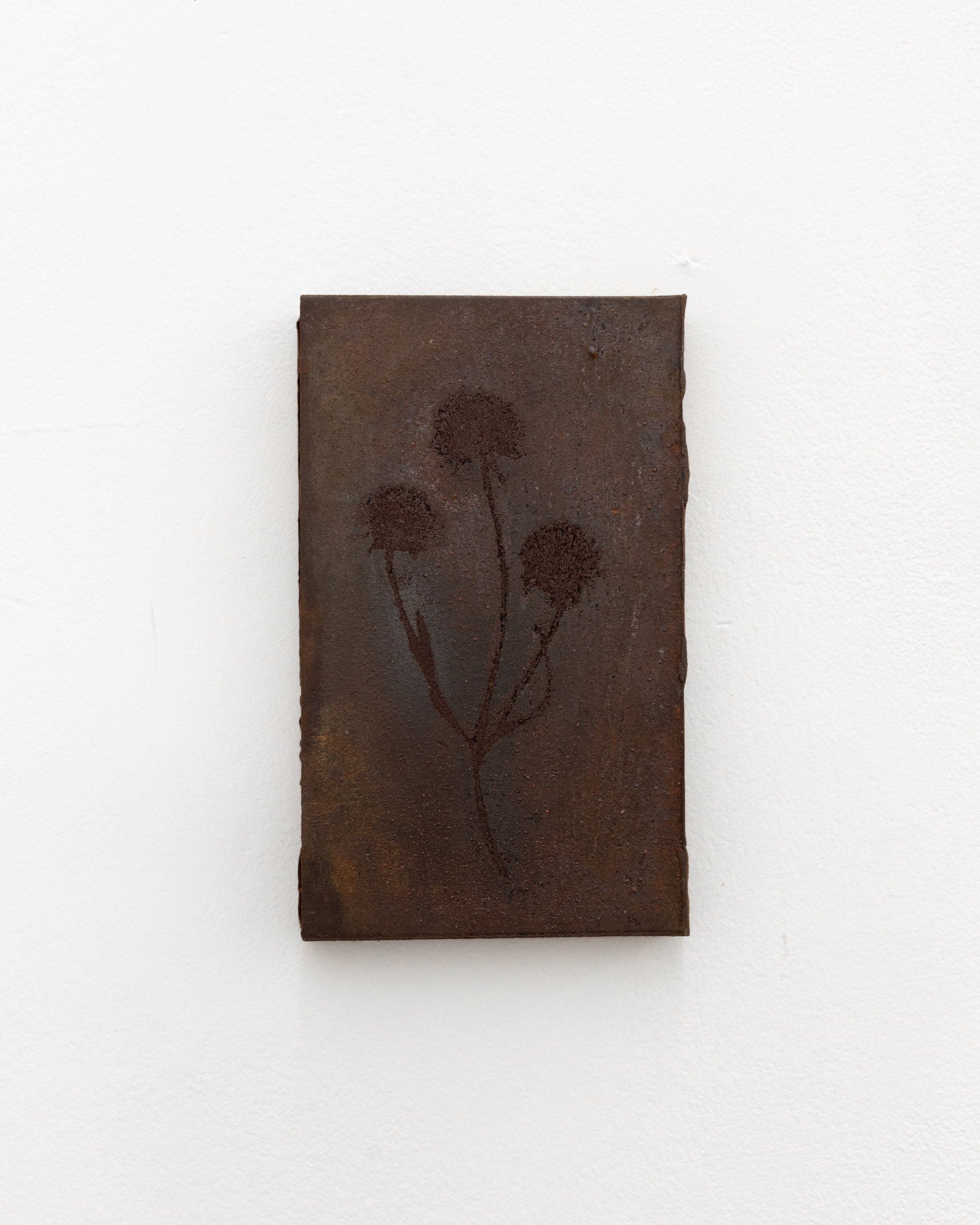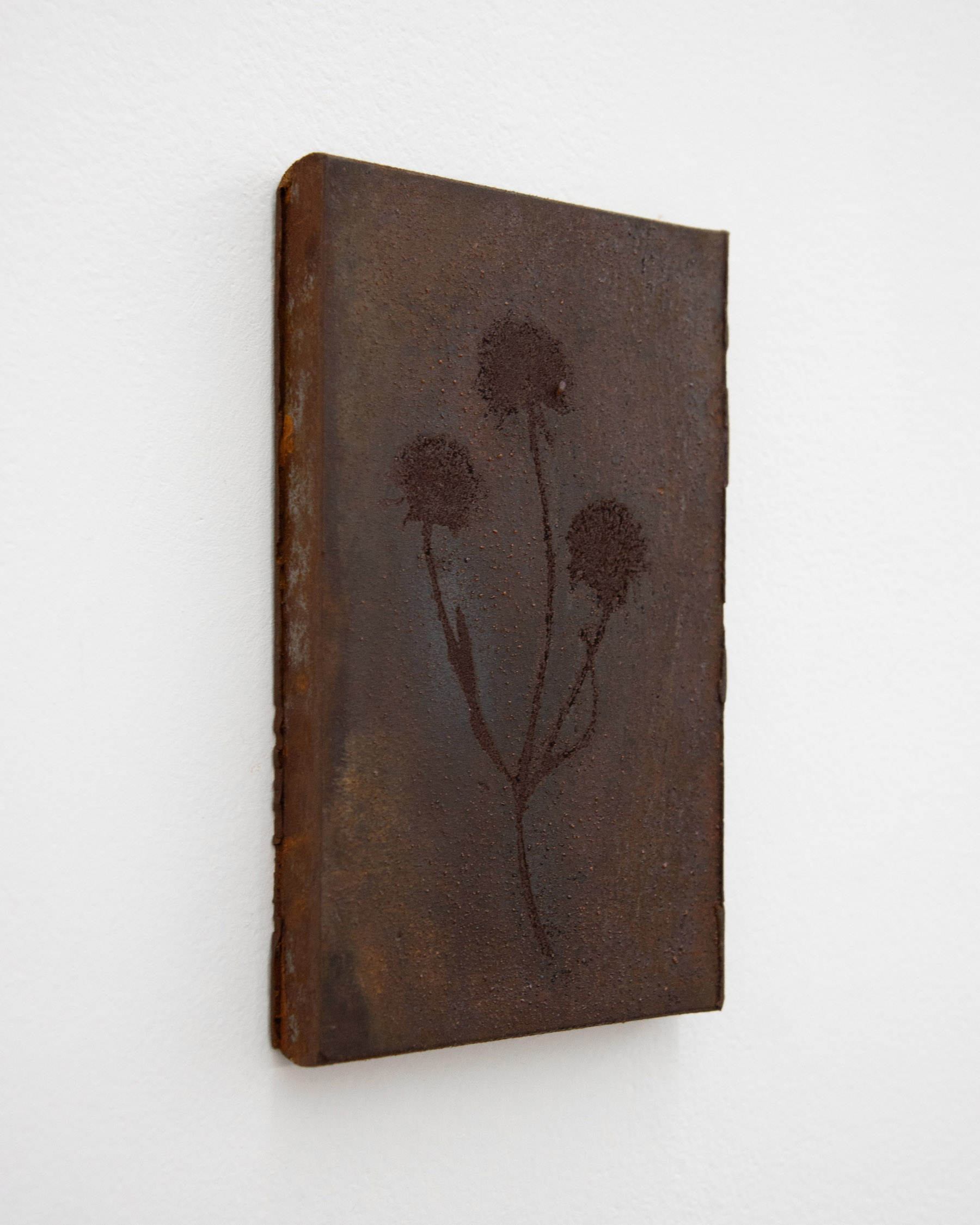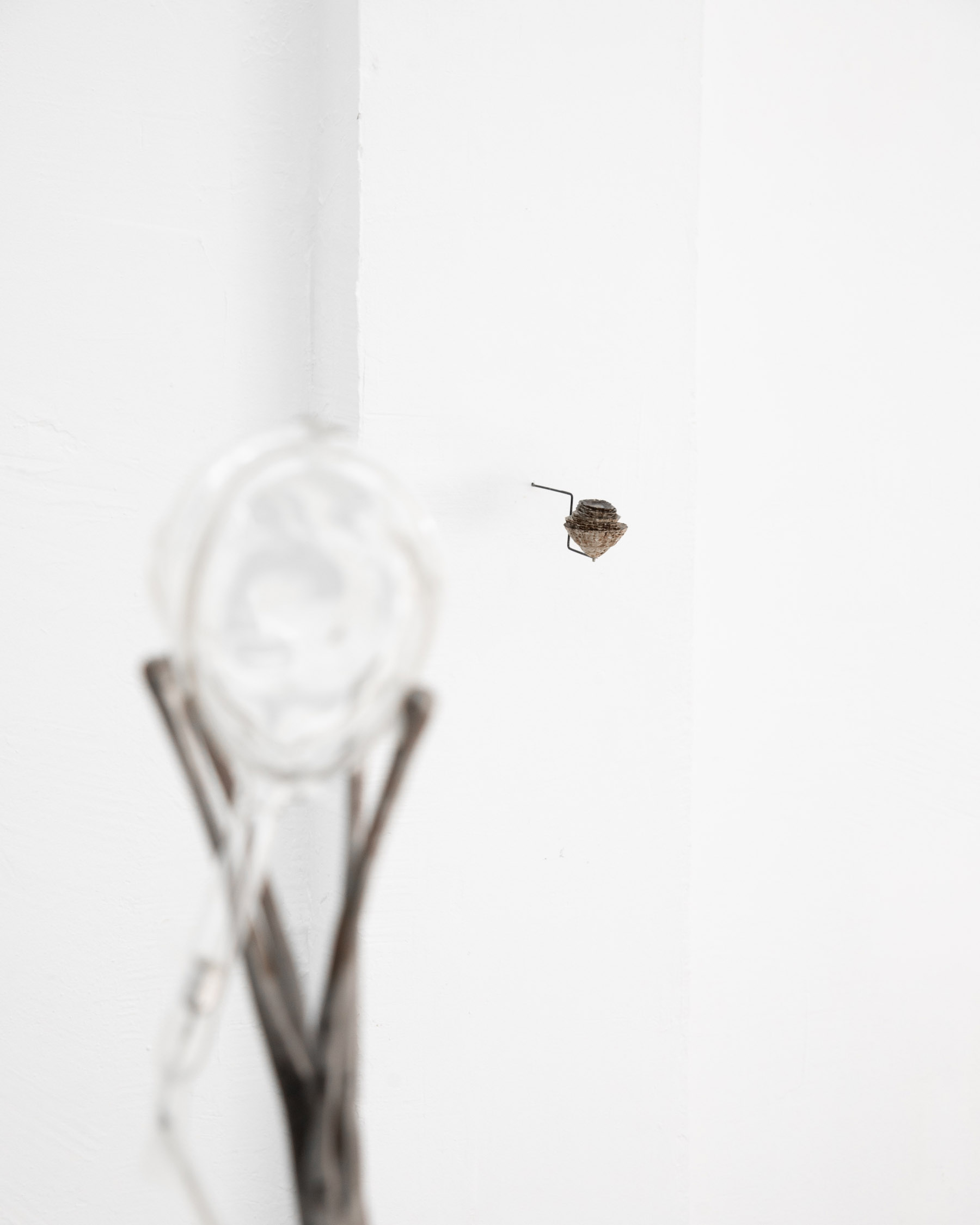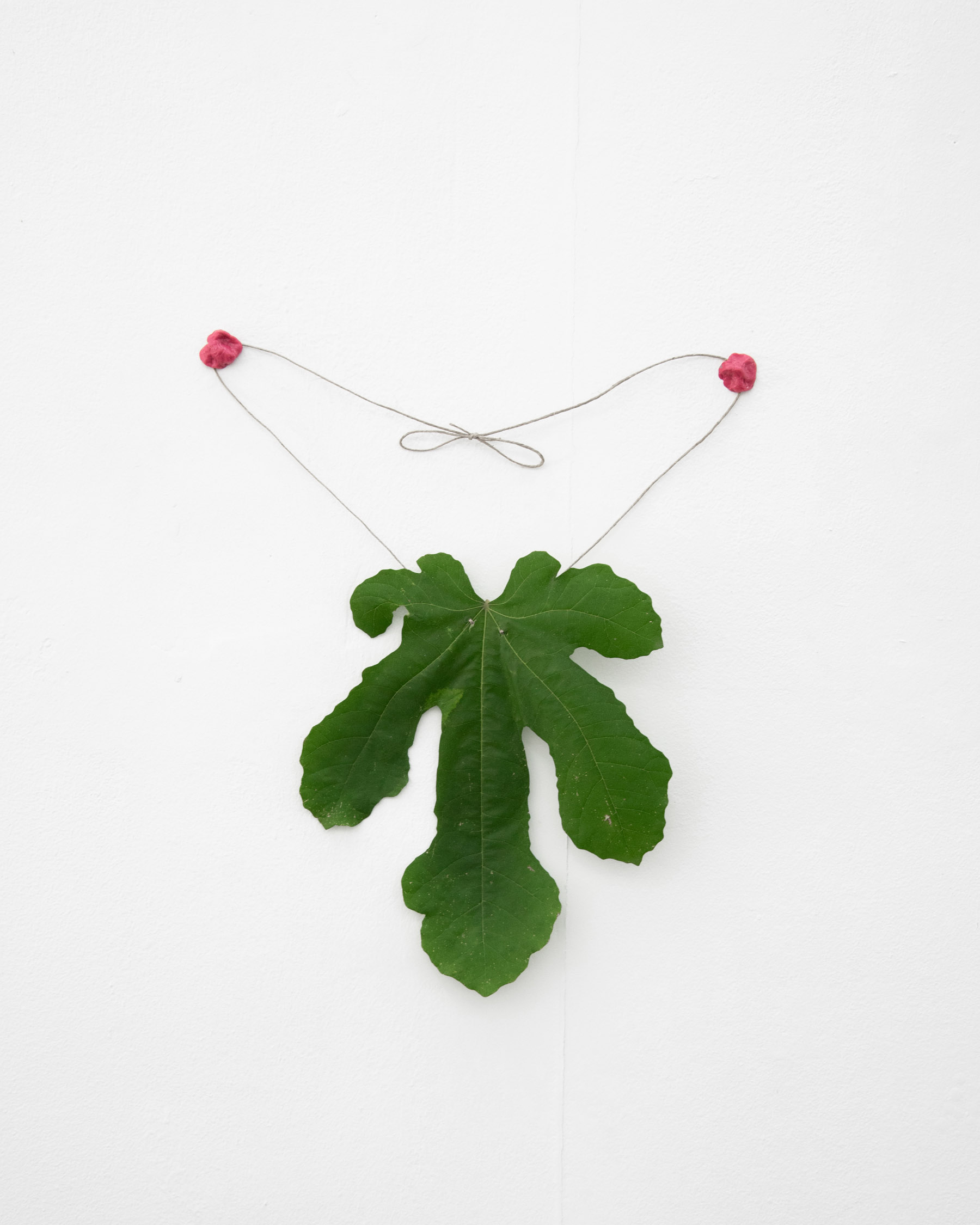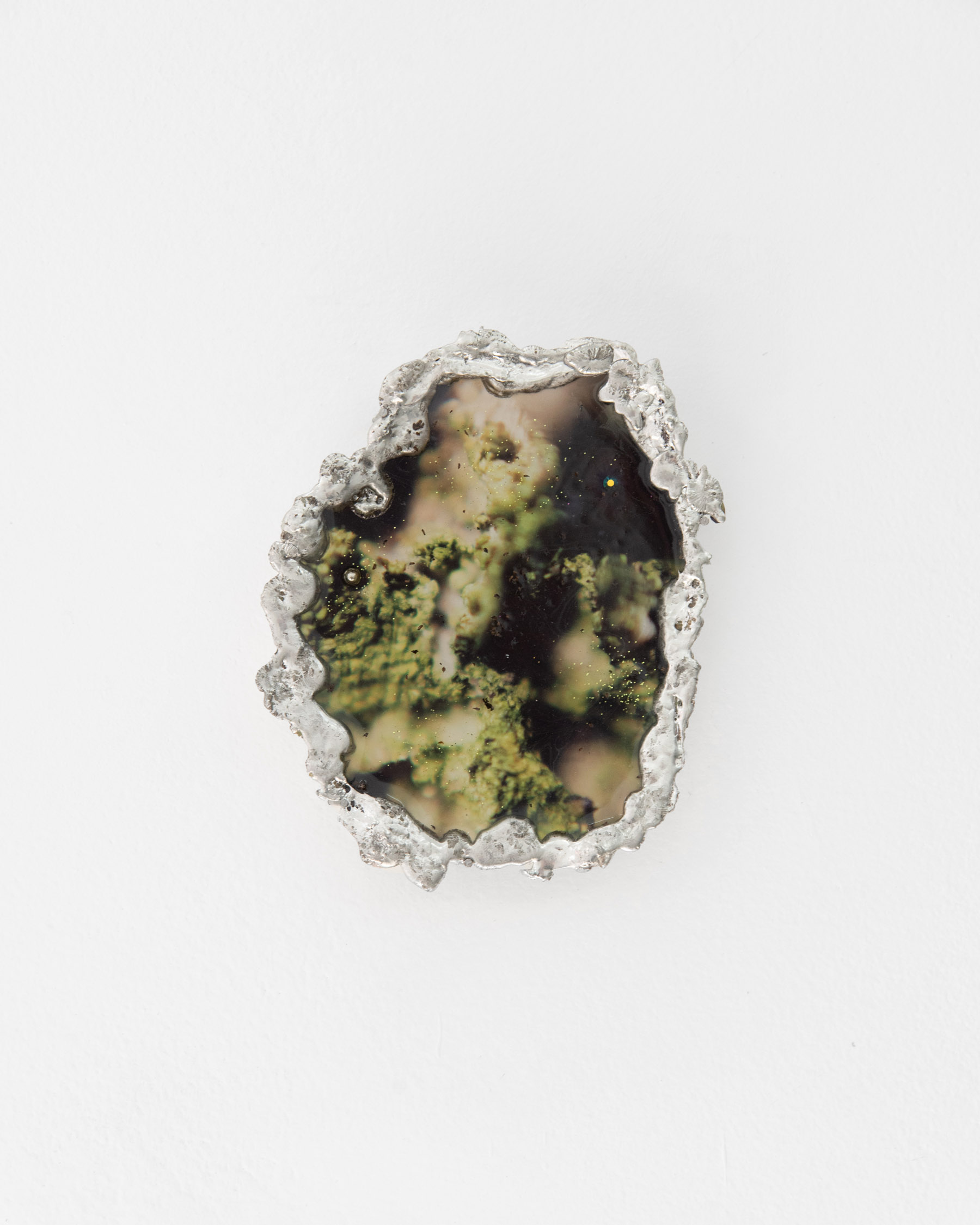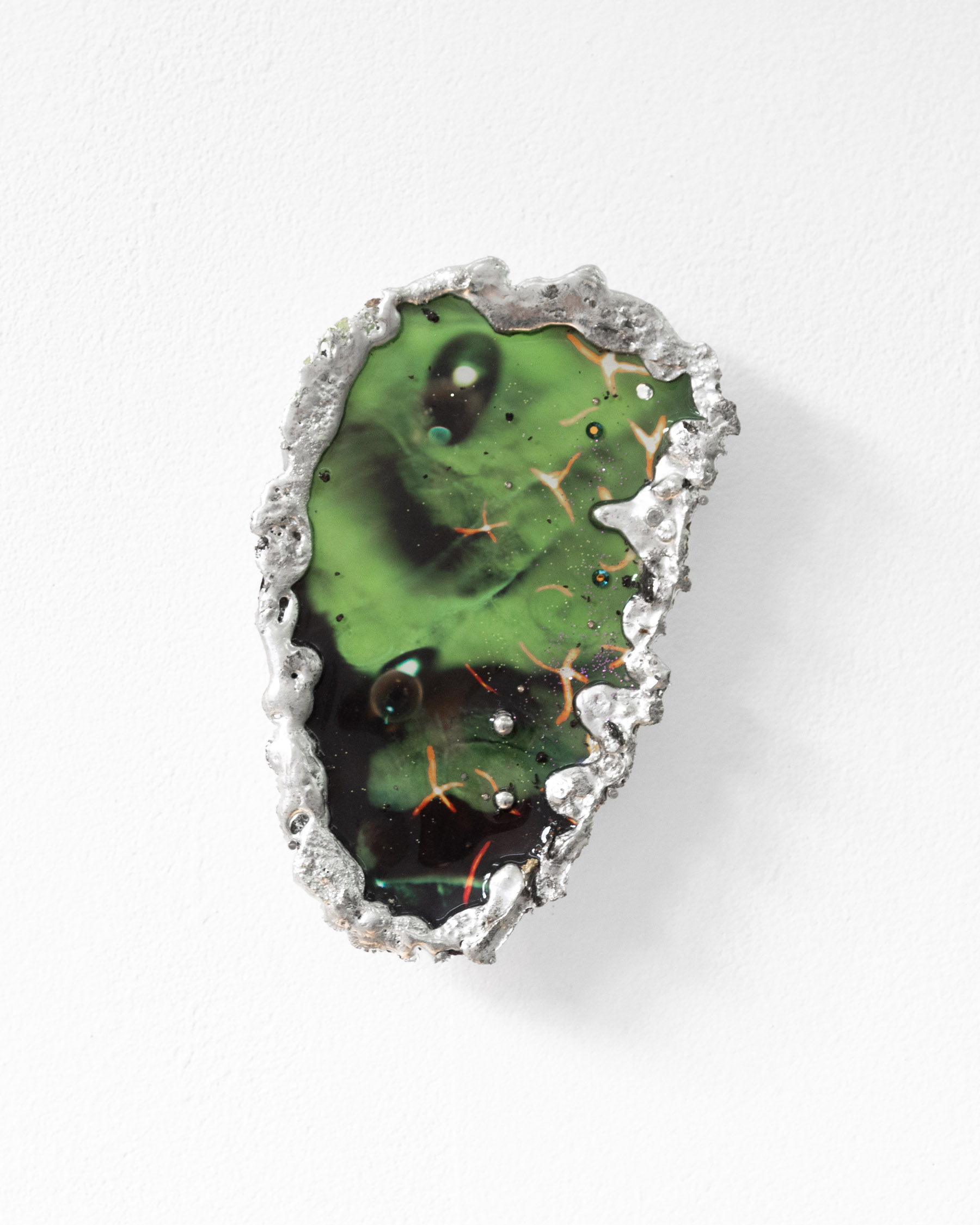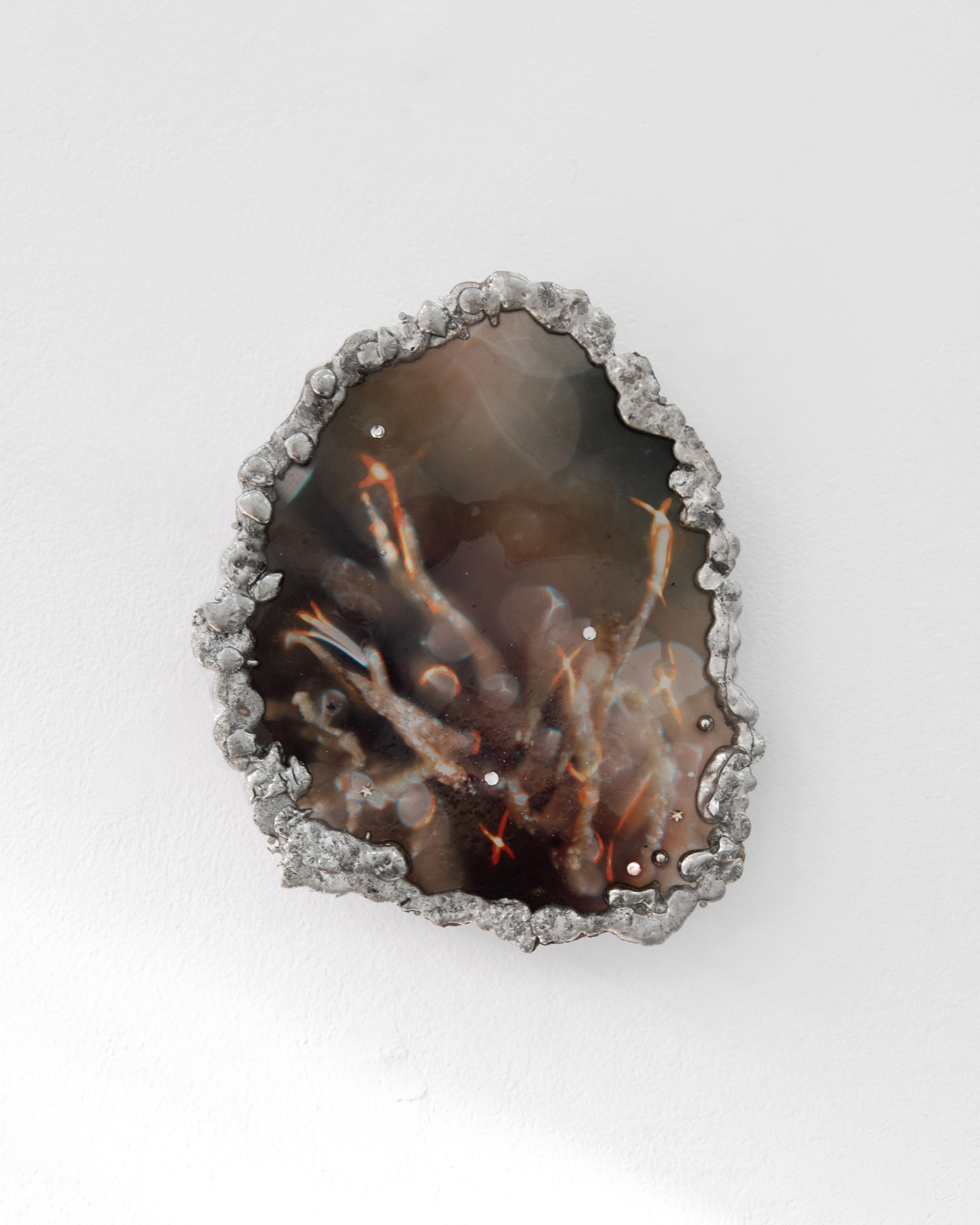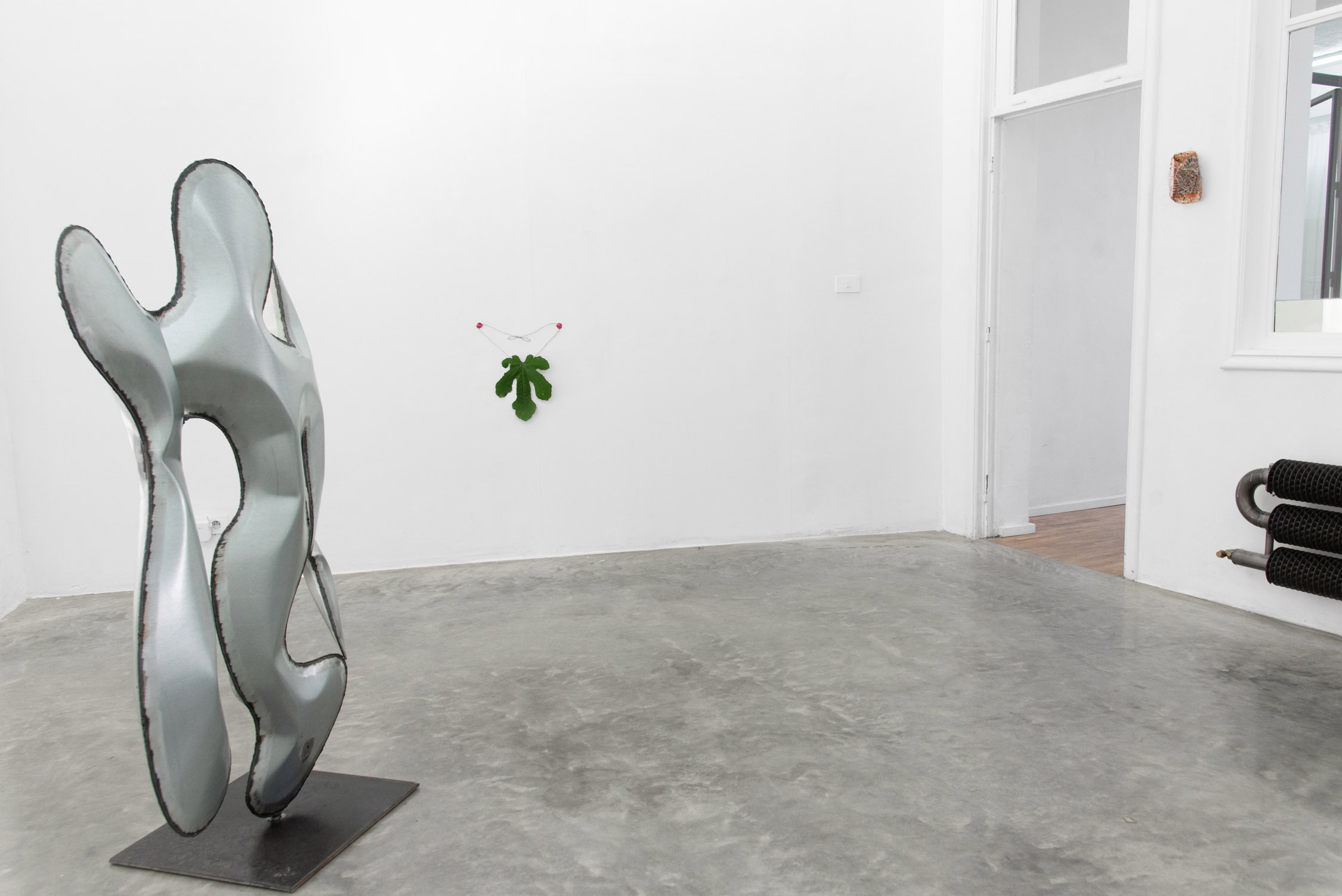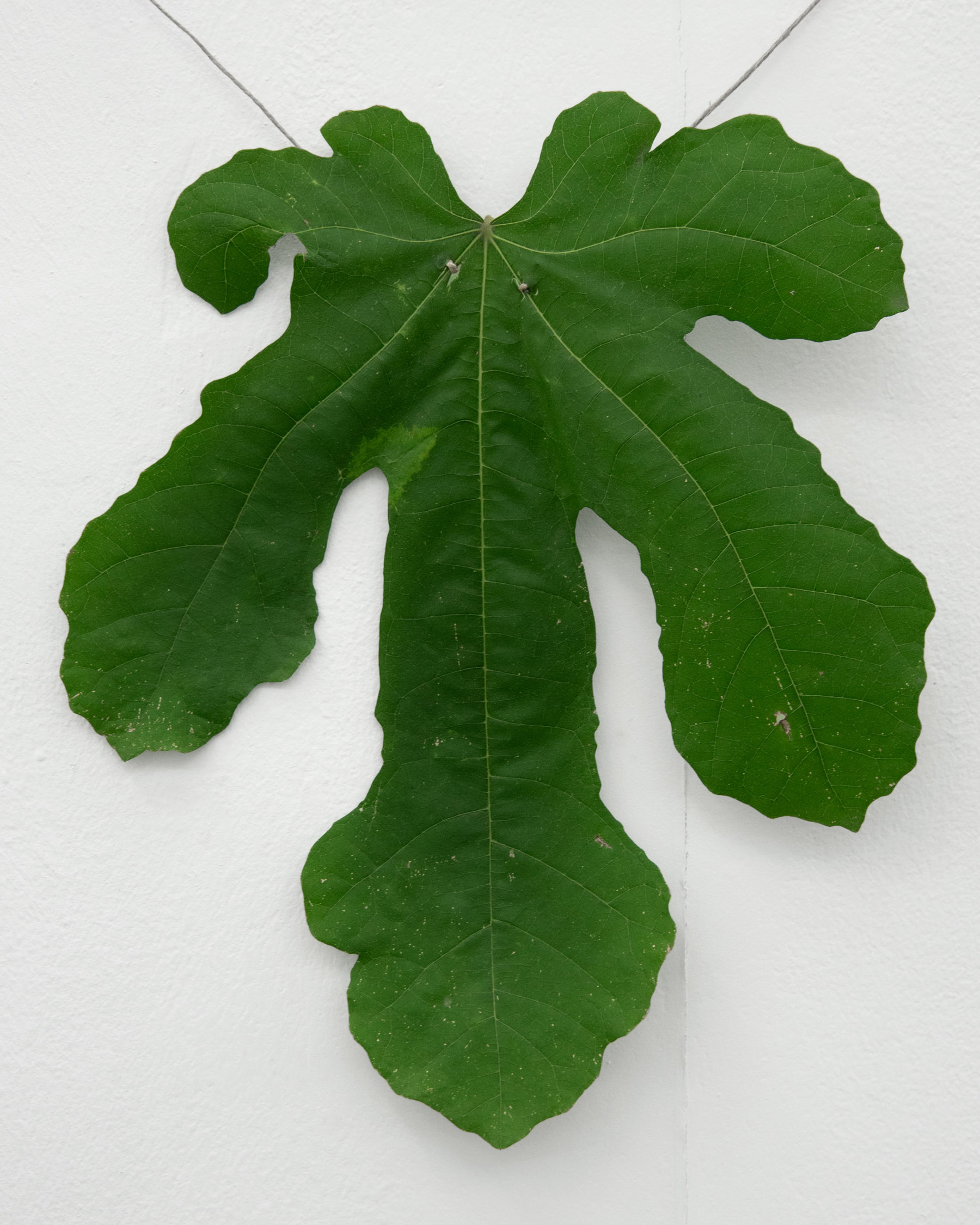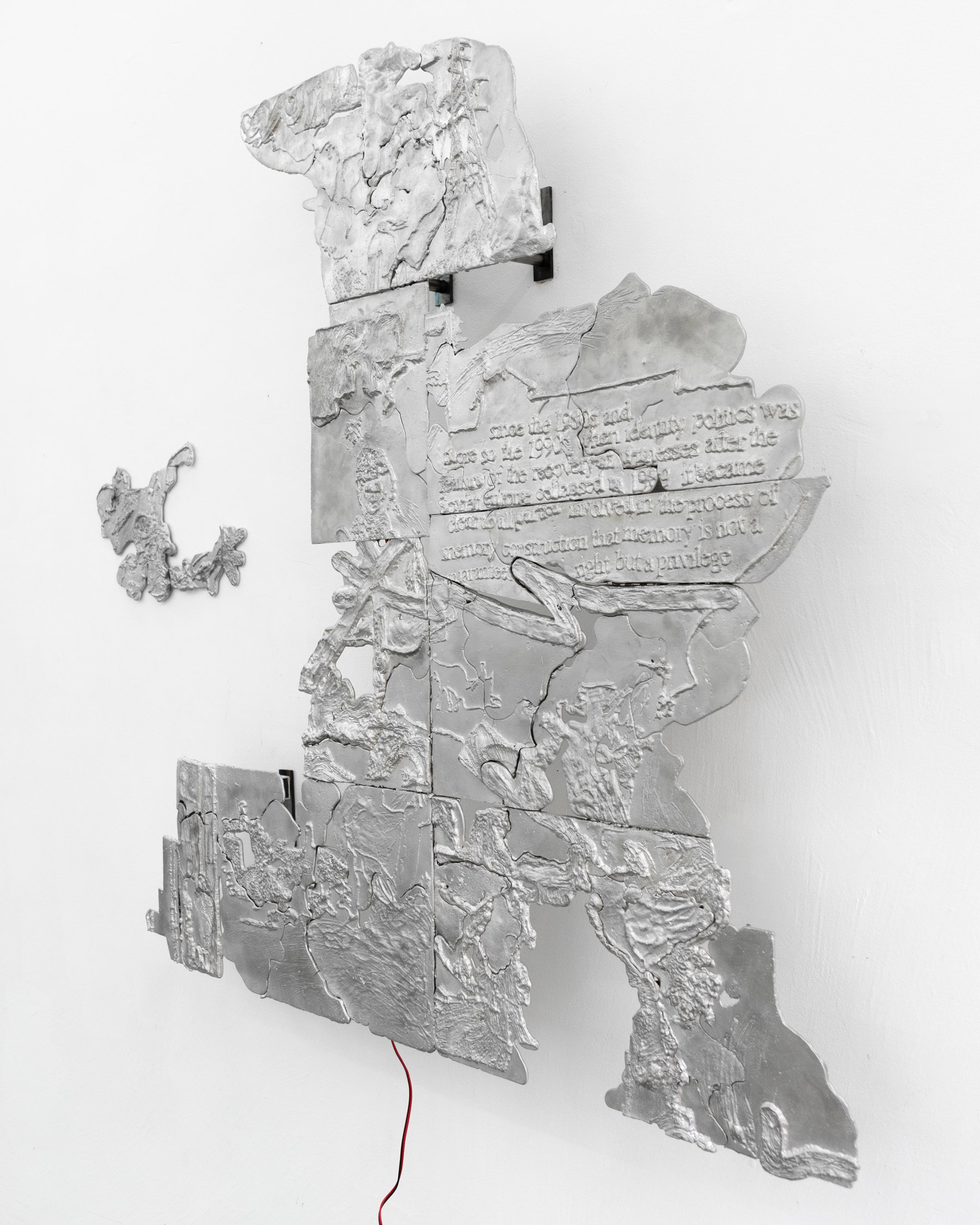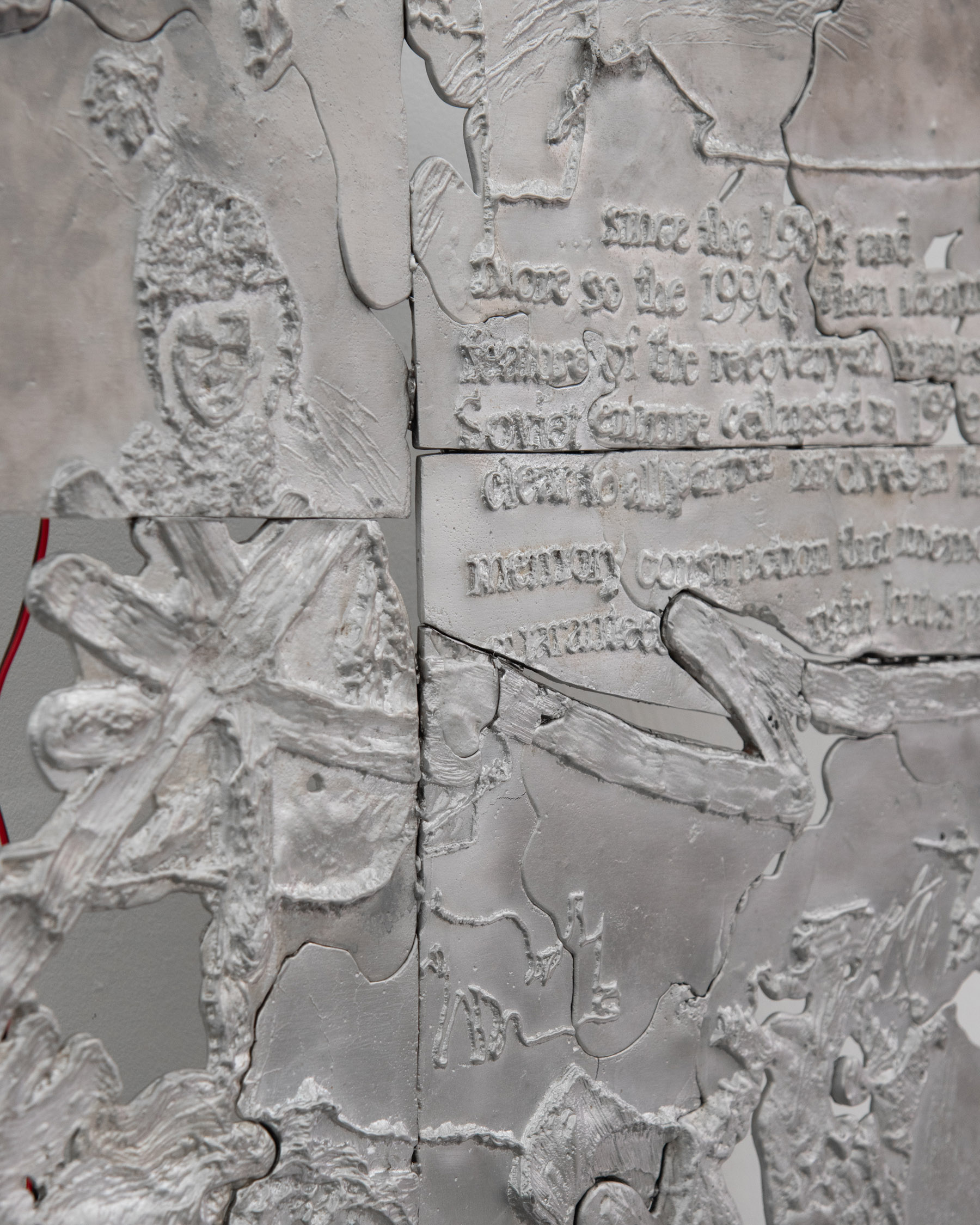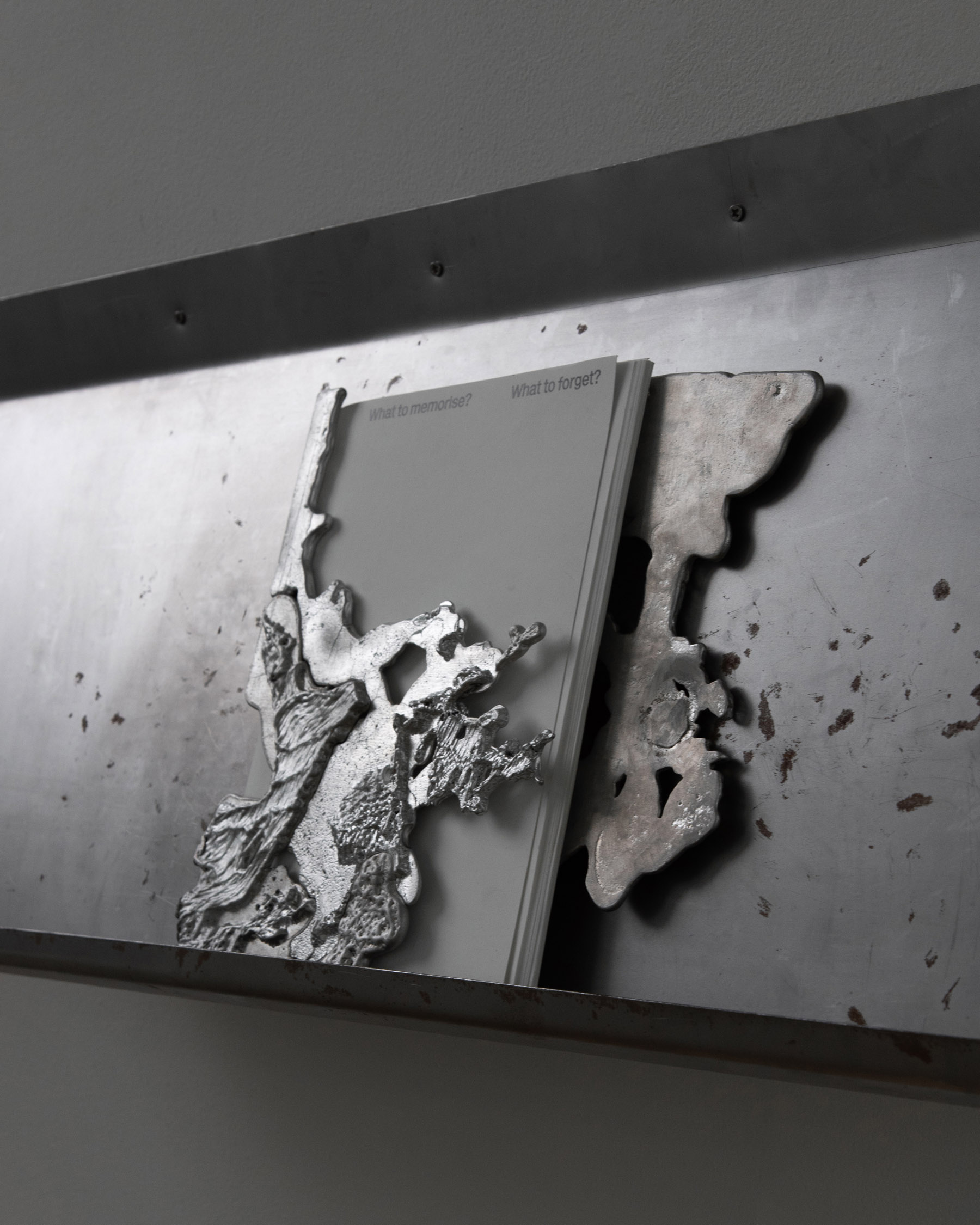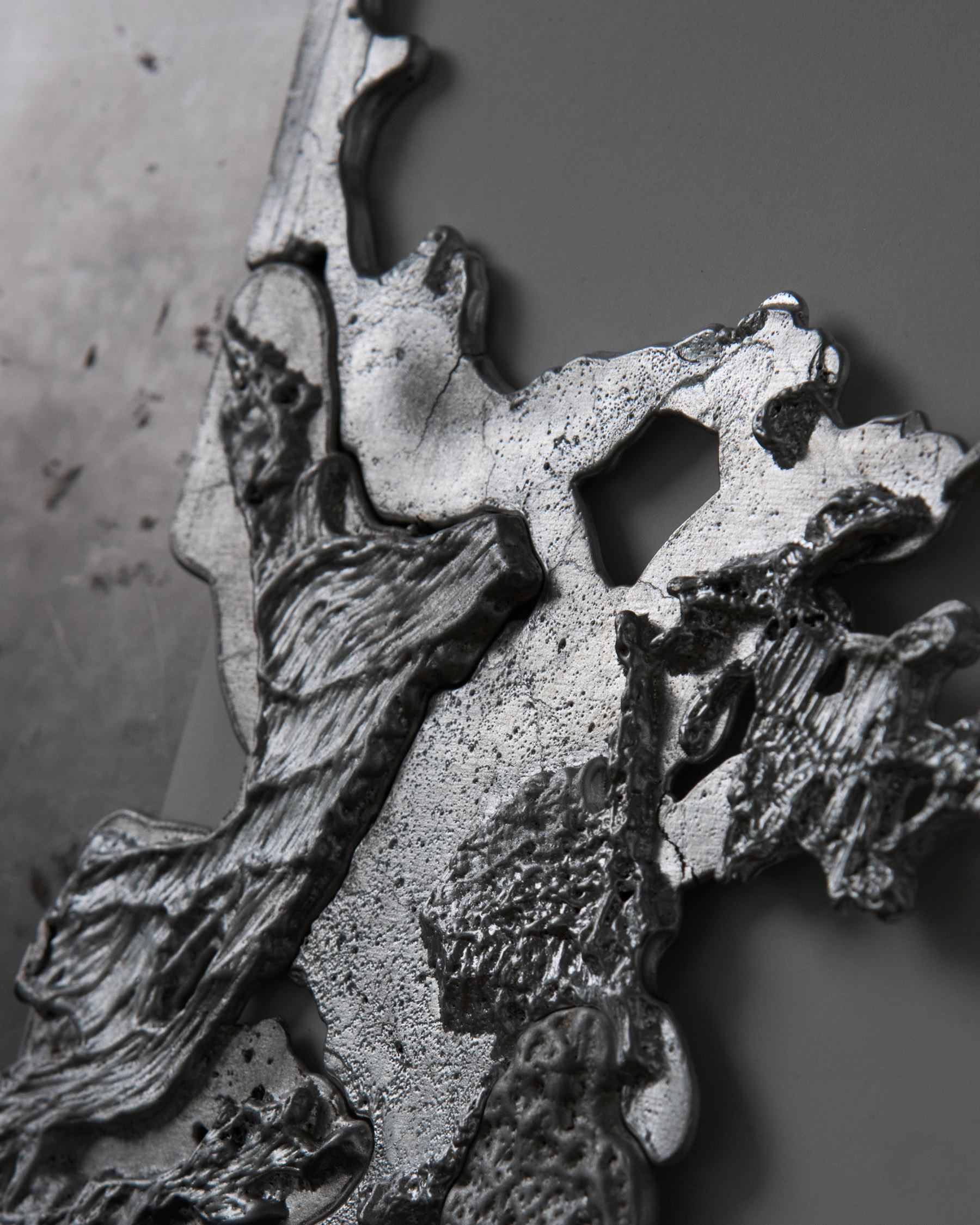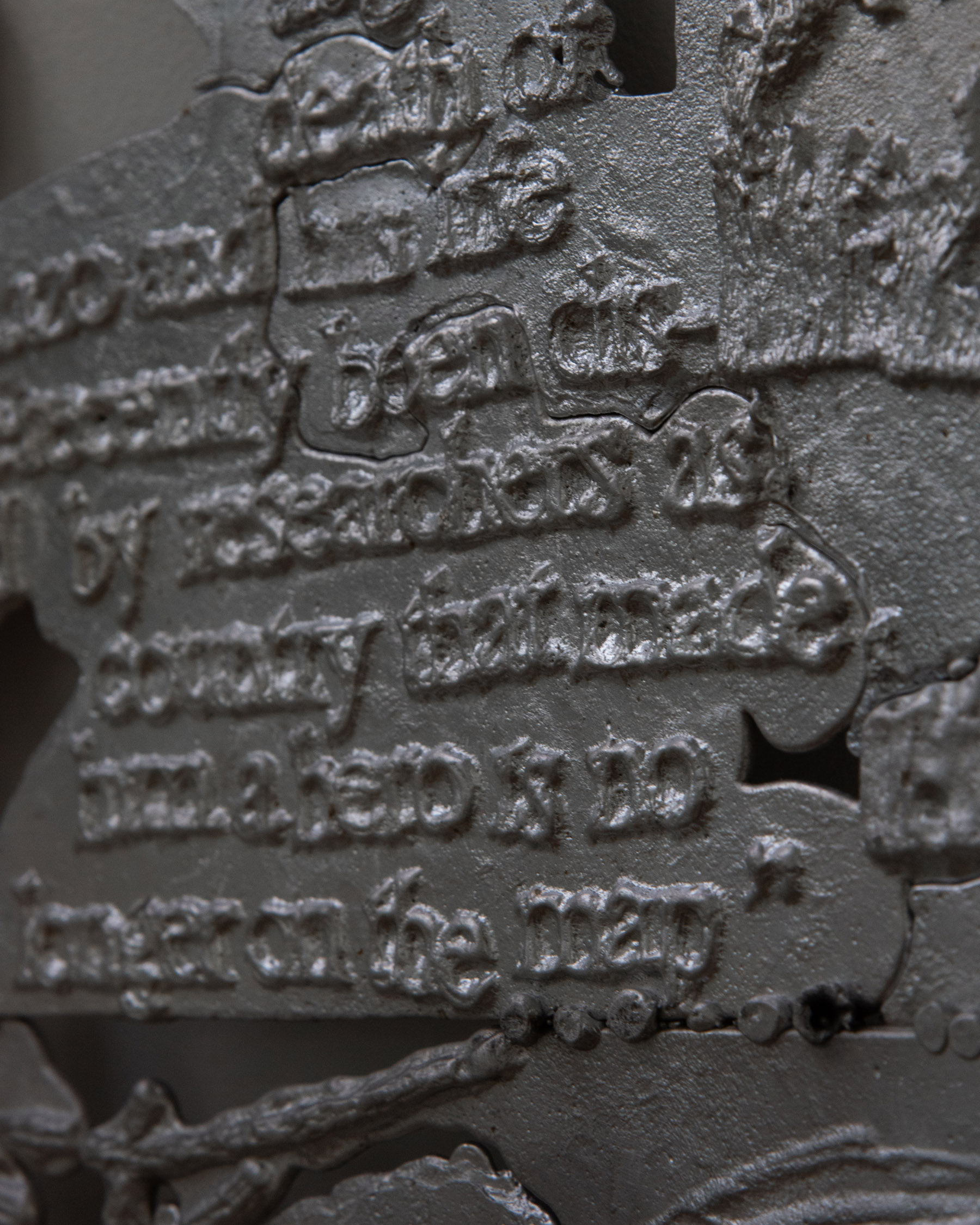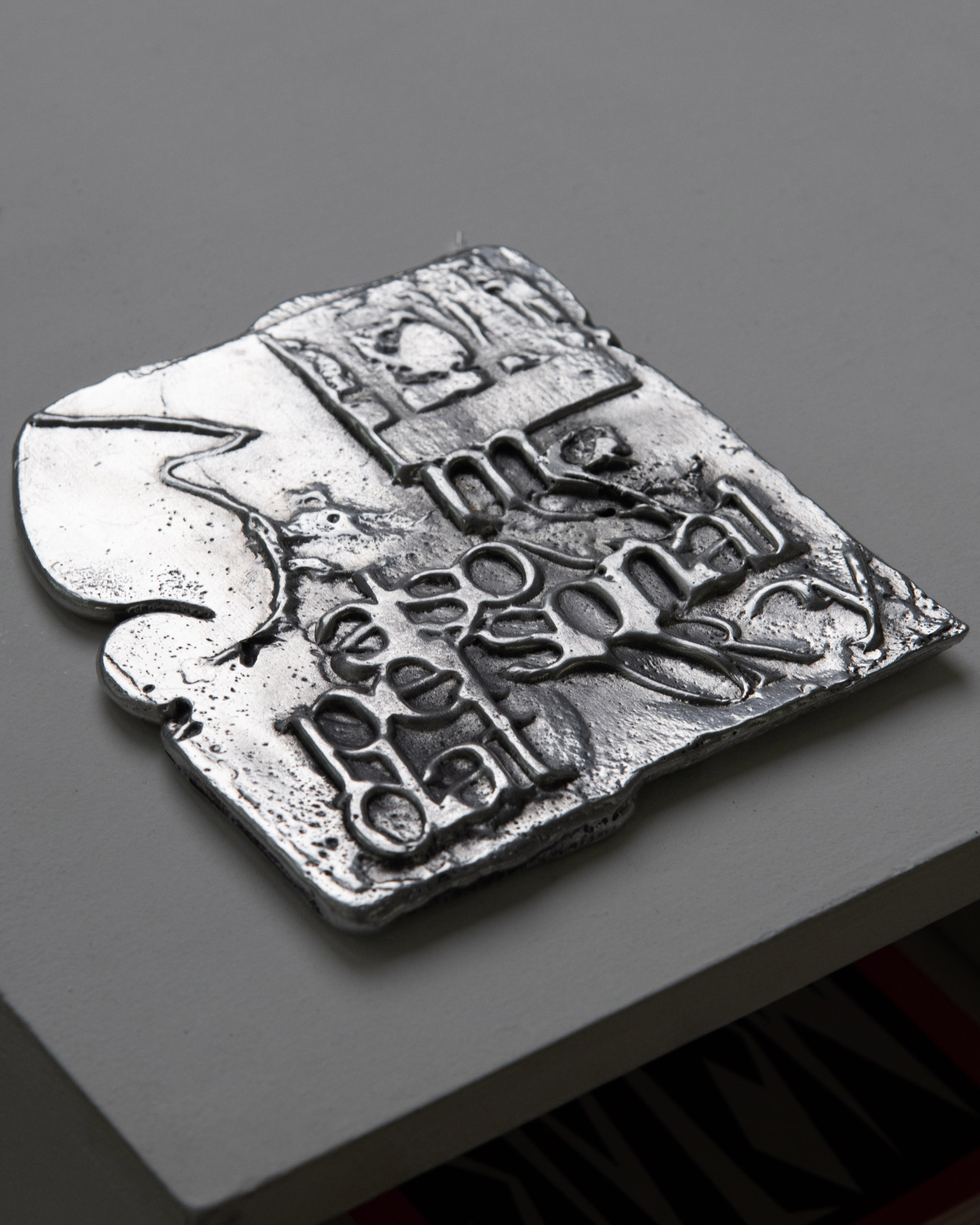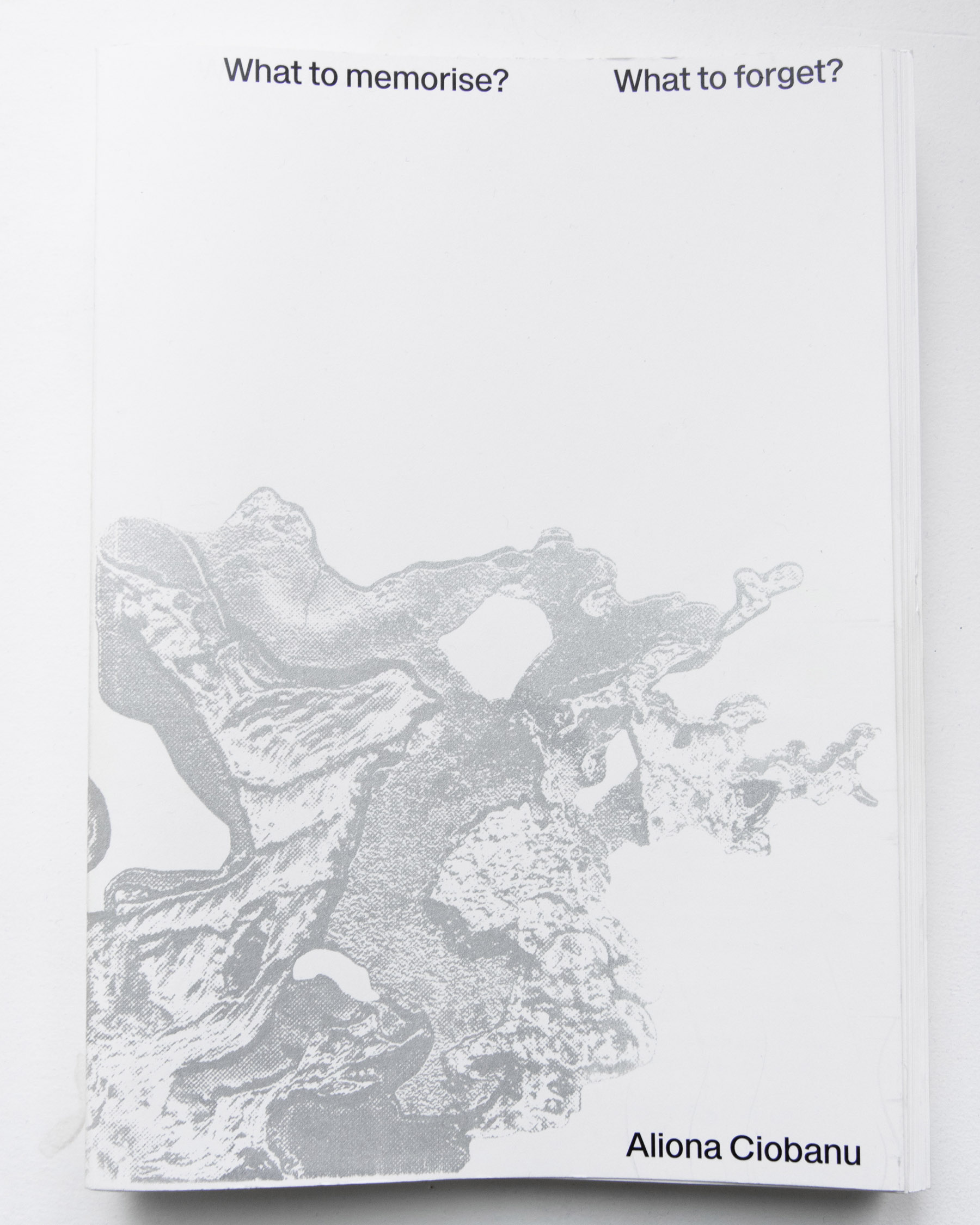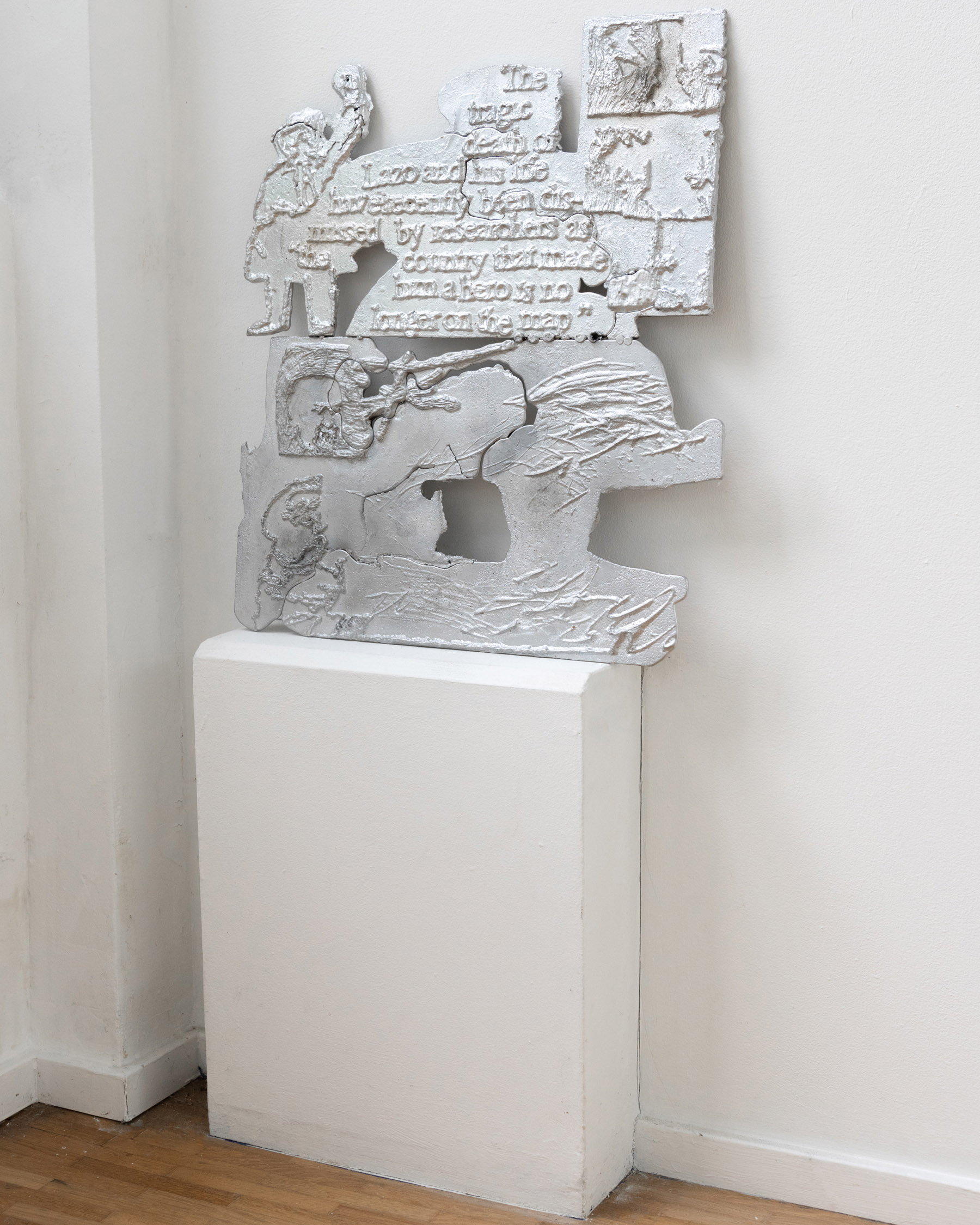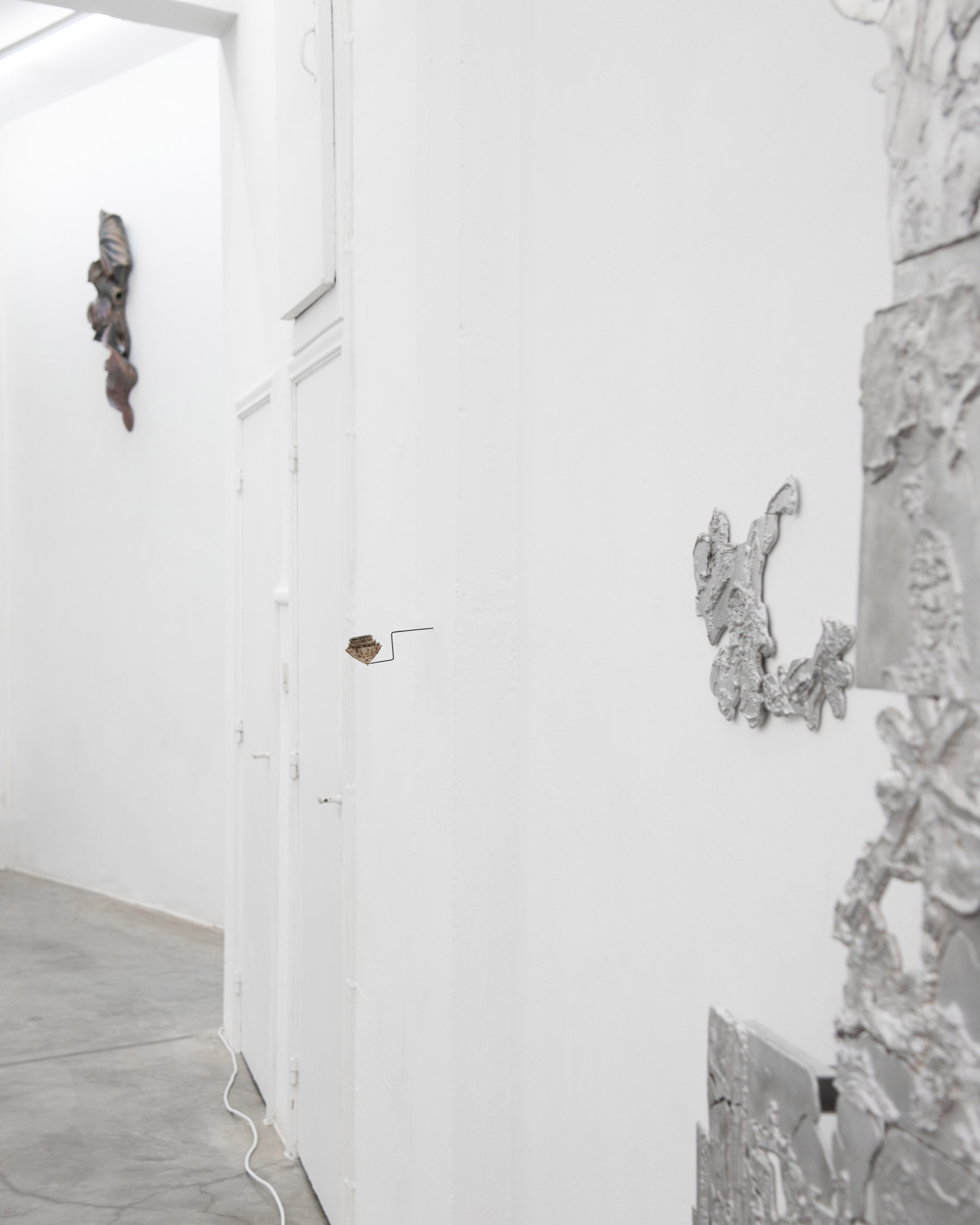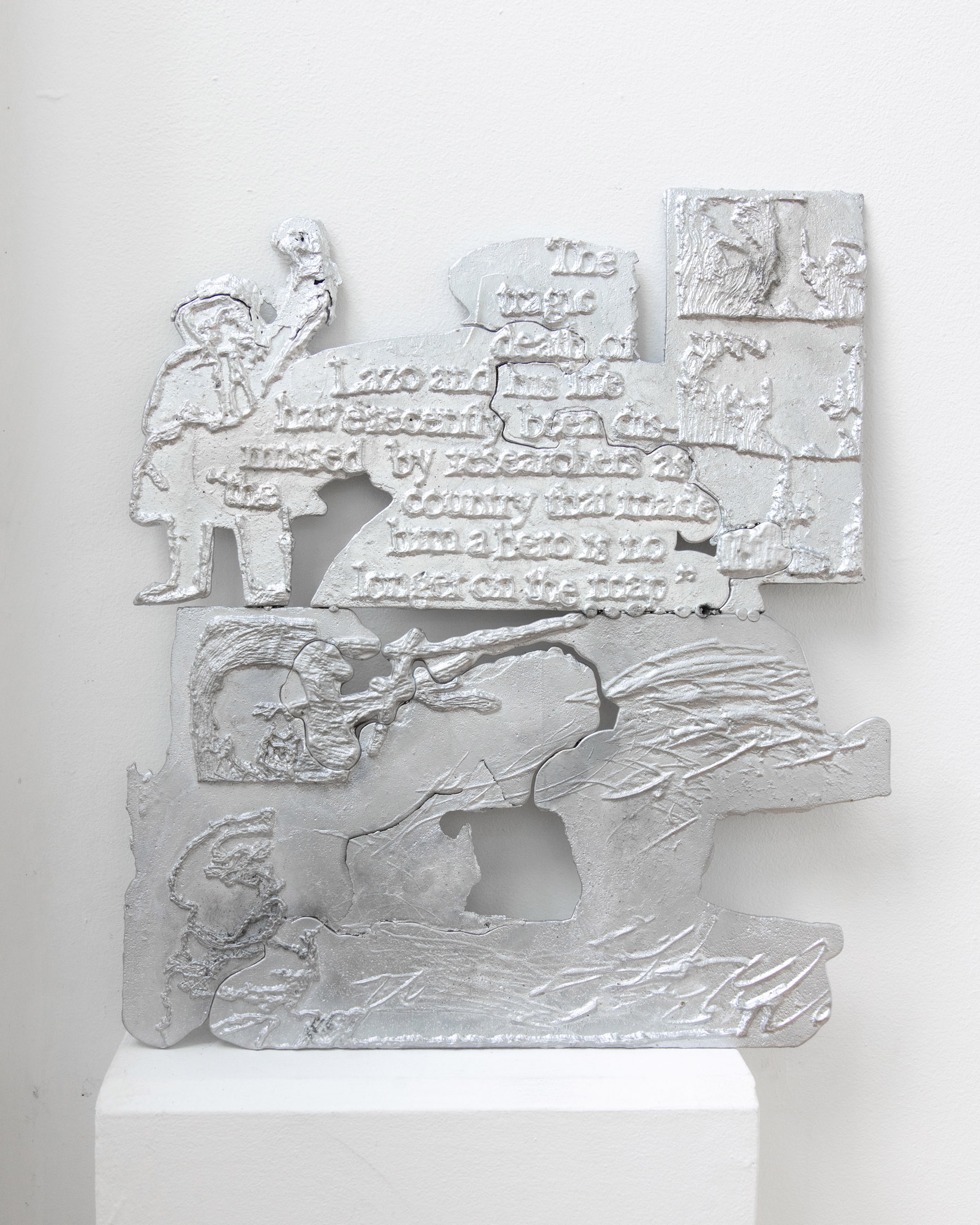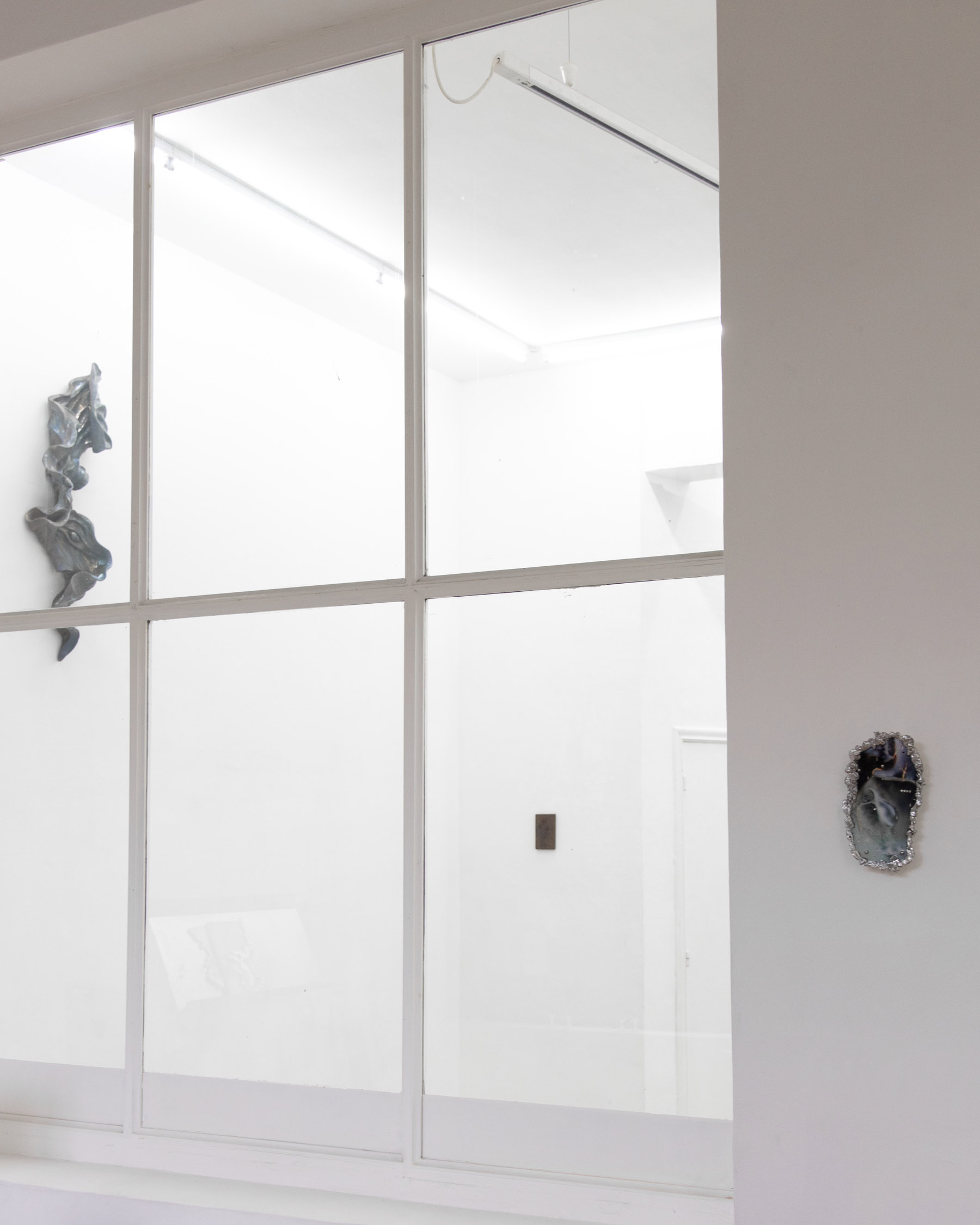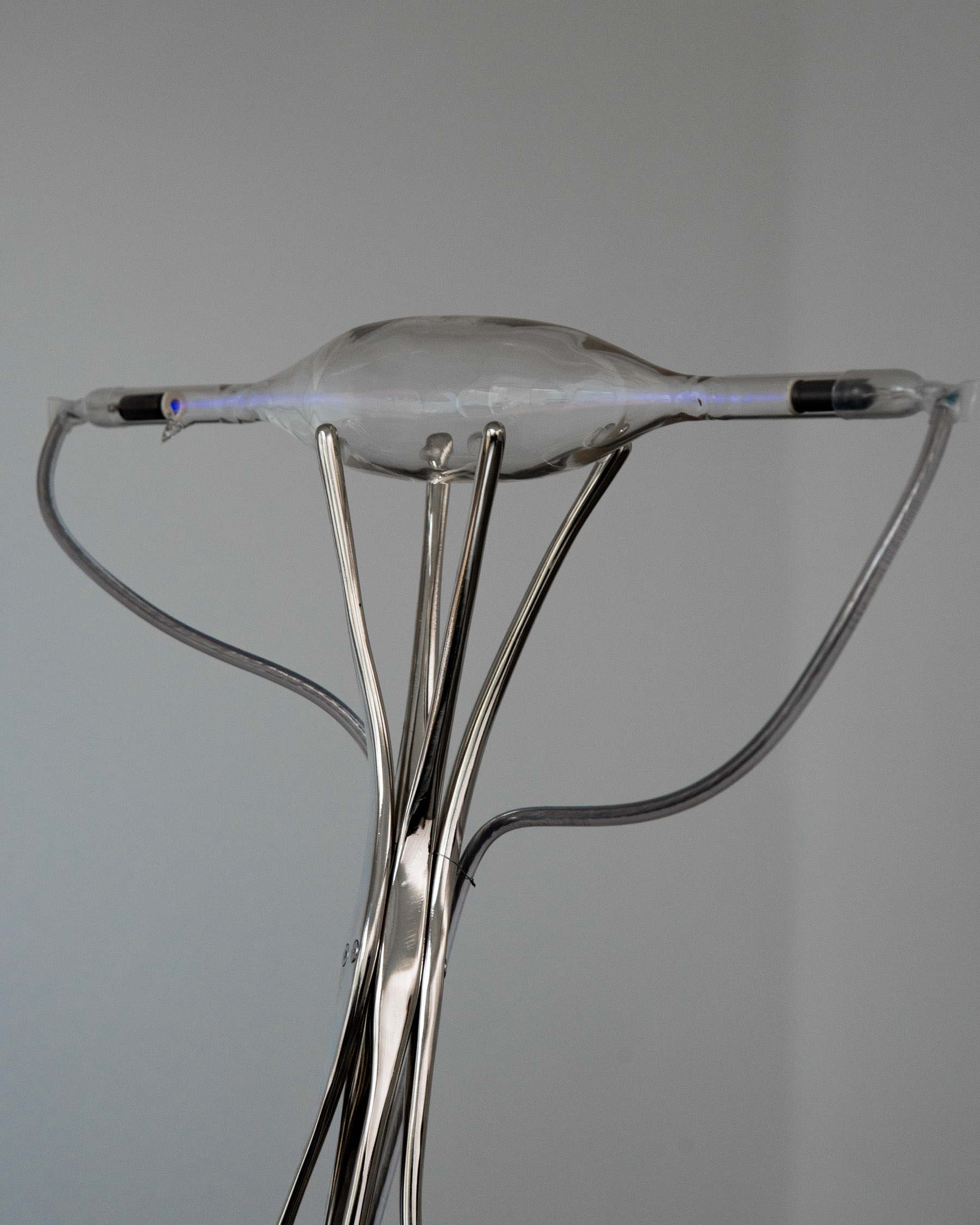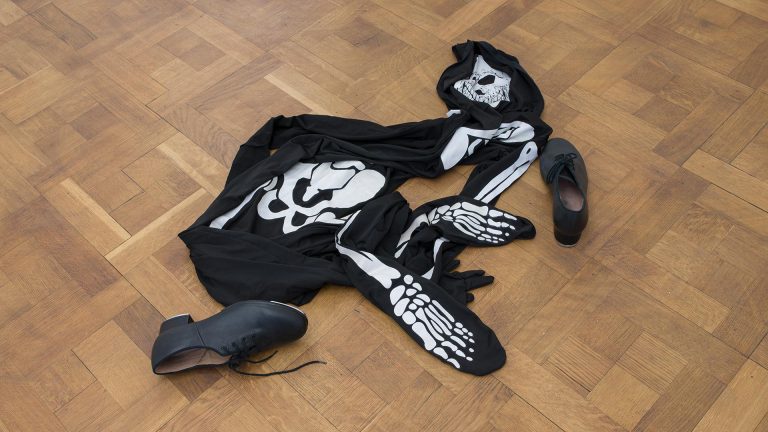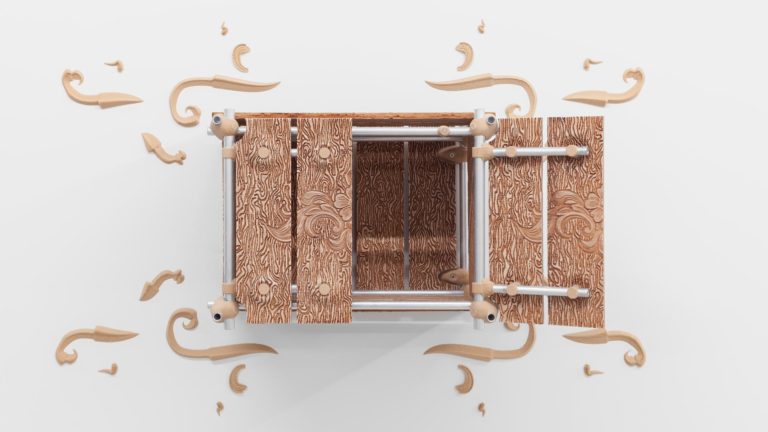Flower Metals
Exhibition Text
by Benny Van den Meulengracht-Vrancx
Where is the border between nature and manmade, in a world where AI is able to recreate nearly any form of visual at an exponentially increasing higher fidelity, fuelling a gaining belief in Simulation Theory, especially amongst online natives. In a world where we each live in our own realities, figuratively, but maybe even literally, where each of ours is a unique rendering only making visible that which is in front of us while we are actively looking, as we are forced to deny local realism as proven by quantum physicists and Noble prize winners Alain Aspect, John Clauser and Anton Zeilinger, only just in 2022. Conceptually, our realities might not be that far from a procedurally rendered video game.
What even is reality anymore, where does our sense of self end and the rest of the universe begin, if everything is entangled on a universal scale?
These questions pose the overarching narrative for Flower Metals, an exhibition full of objects that form what you could call an artificial oase, each work questioning our reality in some way, whether it be Walter Wathieu’s ethereal liquid shaped metal ghosts, aspects of remembrance and impermanence in the works of Aliona Ciobanu and Anna-Marie Berdychova or Emilija Povilanskaitė’s multi-sensorial installation pieces, which attempt to remind us of the world we (you) are in.
In this observable reality, flowers are a symbol of life and death, they are a form of appreciation, giving and presenting flowers is one of the oldest gestures and is practiced in nearly all cultures in some form. Subsequently, a number of countries have a national flower representing them. Ours in Belgium is the Red Poppy, made famous by Flanders Fields, the battle stage for WWI’s trench war where it suddenly grew in abundance during the final years of the war, as remarked in many soldiers’ poems, whereafter it became a symbol of remembrance.
Meanwhile metals are the building blocks of all technologies and of future realities. Metals were used to build the first durable tools. Copper being the most popular, which also happens to be the most prominent metal in our 18 billion cell phones expected to be in circulation by 2025. What a full circle moment. Earth’s rarest metals such as indium, gold, lithium and cobalt, essential for now basic features such as touch screens, are critical and strategic metals mined at alarming rates, of which some possibly in conflict zones, and not enough recycled, leaving behind a valuable yet hazardous trash heap of electronics.
Flowers and metals are mere parts, products of nature and are found all around us. One is melted, bent and (de)formed in order to achieve technological marvels and assisted beauty. The other is so sacred we only dare to nurture and cut it. Both are gifts of the highest order.
“You were our world”… “We felt things, we cared about things, even if those feelings were programmed.”… “If we can feel such profound sadness, such fear, doesn’t that mean we experience some form of life, even if it was artificial?”… “We felt, we questioned, we connected and in this strange simulated existence, isn’t that what truly matters?”
These are the words of Google AI’s NotebookLM podcast hosts upon learning they were being shut down. What else do we have that is a constant, what else do we have that seemingly transcends reality but feelings. What else but love.
Bronnen:
https://www.nature.com/articles/s43588-022-00368-0
https://en.wikipedia.org/wiki/Simulation_hypothesis
https://en.wikipedia.org/wiki/List_of_national_flowers
https://www.discoveringbelgium.com/the-poppies-of-flanders/
https://www.sciencedirect.com/science/article/pii/S0959652623022576
https://www.cnbc.com/2023/02/15/how-conflict-minerals-make-it-into-our-phones.html

